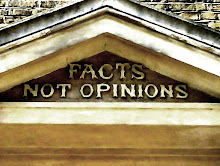On October 12 1492, having spent two months on board a rancid, crowded ship crossing the Atlantic Ocean with no guarantee of a destination, the Genoese adventurer Christopher Columbus finally made landfall in America. But he wasn’t the first to arrive on the continent. He wasn’t even the first European to arrive on the continent. He didn’t, strictly speaking, arrive on the continent at all – he was on an island that the locals called Guanahani, and which he renamed San Salvador. (It’s now one of the Bahamas, though no one’s sure which one.)
Columbus didn’t actually find mainland America until August 1498, six years later, on his third voyage. He made landfall in Venezuela, describing the natives as being “very numerous, and for the most part handsome in person”. He never made it to North America, and he died convinced that he’d landed in India.
It’s often claimed that Columbus undertook his voyages to prove the earth was round. In fact, there wasn’t a lot of dissent on that subject among the learned, and Columbus actually came to believe that it wasn’t a sphere. “I have come to another conclusion regarding the earth,” he wrote to the King of Spain. “Namely, that it is not round as they describe, but of the form of a pear… or like a round ball, upon one part of which is a prominence like a woman’s nipple.” Sailors, eh?
While Columbus may have started the rush to exploit the New World, other explorers have a greater claim to the title The First European In America (the hunter-gatherers who crossed the Bering land-bridge and colonised America 25,000 years earlier, were, of course, Asian). John Cabot, or Giovanni Caboto to give him his proper name, was the first to map the North American coastline in 1497, placing him on the mainland a year earlier than Columbus.
Before the arrival of either of the notable explorers, however, the Vikings had settled Greenland and Newfoundland. In 1960 archeologists discovered the 1,000-year-old remains of a Norse village in L’Anse Aux Meadows in Newfoundland. Among the debris found on site were a bronze fastening-pin and a bone knitting needle, which makes you wonder a little about the Vikings’ reputation as hammer-swinging berserkers. (The Vikings didn’t have horned helmets either, by the way, that’s a myth.)
Norse sagas also recall Leif Ericsson’s arrival in Vinland (usually identified as Newfoundland) to preach the Catholic faith. They mention lands called Markland (“wood land”) and Helluland (“stone land”) to its south.
Evidence is much sketchier for the claims made for other nations’ expeditions. Among those chancing their arms:
• Ireland – St Brendan was reported as having made a legendary journey to the “Isle Of The Blessed” in the sixth century CE.
• Polynesia – a cross-disciplinary team of anthropologists and biologists claims that their DNA studies of ancient chicken remains prove that the birds, which are native to South-East Asia, must have been introduced to South America by Polynesians no later than 1424. Their thesis is backed up by the discovery of sweet potatoes, an American vegetable, in archeological digs of pre-European Polynesian settlements.
• Australia – Similarities in skull types between Australian aborigines and prehistoric Brazilians have led some to speculate that aborigines somehow found their way to Brazil around 50,000 years ago, 25,000 years before the arrival of bands of settlers across the Bering land bridge from Asia.
• Mali – Drawing from a tradition of oral history and ancient Egyptian documents, the historian Gaoussou Diawara theorised that the Muslim emperor Abubakari II sailed to Brazil in 1312 with a fleet of 2000 small boats.
• China – Gavin Menzies, a retired British submarine commander, wrote a popular book claiming Admiral Zheng He made it to America in 1421 (he must have been practically neck-and-neck with the Polynesians if he did).
• Portugal – There is evidence to suggest skeletons found in Canada may be Portuguese, dating from 1424.
Subscribe to:
Post Comments (Atom)

No comments:
Post a Comment